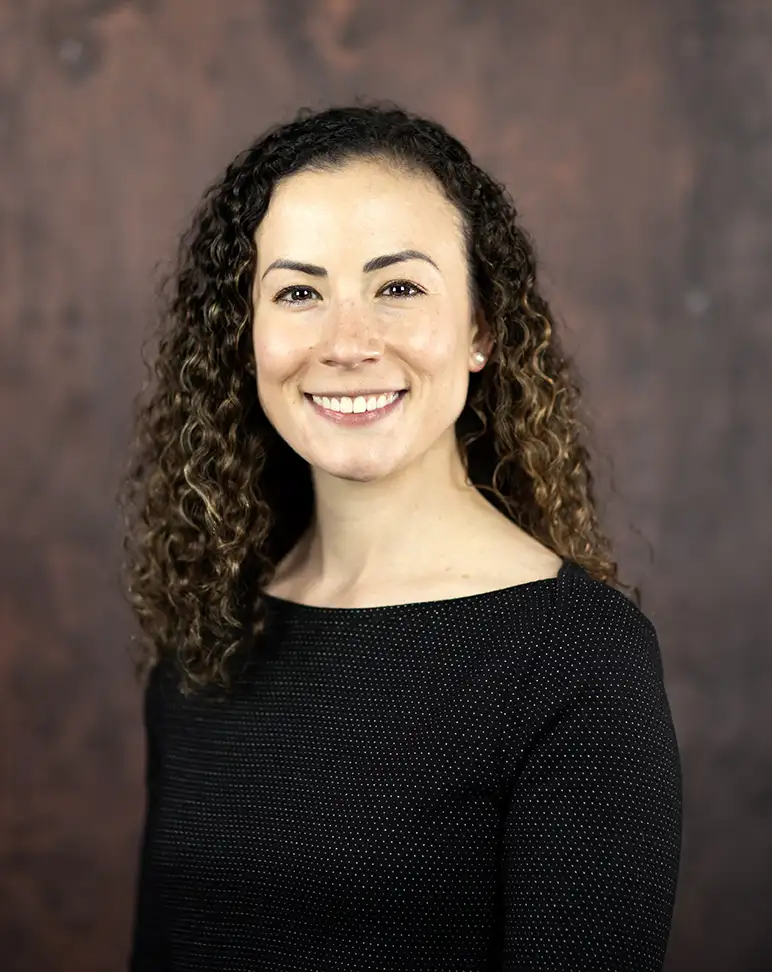Civil engineering professor studies multi-faceted ways to store carbon dioxide in rocks and concrete
Meet Laura Dalton

As a National Energy Technology Laboratory (NETL) fellow, Laura Dalton is studying how carbon dioxide can be stored in rock and how carbon storage changes the rock’s characteristics. (Photo Credit: Duke University)
Laura Dalton decided to pursue graduate studies in science, technology, engineering and mathematics (STEM) after successfully completing two internship programs at the National Energy Technology Laboratory (NETL) administered through the Oak Ridge Institute for Science and Education (ORISE). First, she participated in the Department of Energy’s (DOE) Mickey Leland Energy Fellowship (MLEF) summer internship program at NETL, which then led her to participating in NETL’s Professional Internship Program (PIP). She was inspired by her research project, where she used specialized X-ray technology to scan materials for solving engineering problems.
Today, Dalton participates in NETL’s Faculty Research Program (FRP), also administered through ORISE. NETL offers opportunities to participate in energy-related research associated to its mission to strengthen our nation’s security, to improve our nation’s environment, and to advance energy options that fuel our nation’s economy.
“I have participated in MLEF at NETL, NETL’s PIP, and after my master’s degree, I participated in NETL’s Postgraduate Research Program (PGRP) for two years before starting my PhD. Now, nearly a decade since MLEF, I am participating in the NETL FRP as a faculty member,” Dalton said. “It is truly incredible how my experiences at NETL through ORISE prepared me for my career!”
Alongside her mentor Dustin Crandall, Dalton is studying methods of carbon capture to mitigate negative effects of climate change caused by excess carbon dioxide (CO2) in the atmosphere. She uses X-ray computed tomography (CT) to see inside materials to study how CO2 can be stored in subsurface rocks, and the effect that this has on the rock. This process is called carbon capture and storage (CCS).
For Dalton, her focus is to design experiments that mimic the natural environment of CCS rocks, such as replicating rock conditions within hundreds or thousands of feet underground. Then, she can study how porous rock with mineralized carbon may change chemically and physically under these natural conditions. Dalton anticipates that, as the project continues, it will help discover the storage potential for specific rock formations across the US.
“Mitigating climate change reduces all the adverse effects it is causing, such as extreme weather events, forest fires, droughts, etc.,” said Dalton. “Which disrupt food supply chains, infrastructure integrity and air quality to name a few. Mitigation can save money, lower disturbances to local ecosystems and improve quality of life for everyone.”
Additionally, carbon is used and expended in cement manufacturing, which accounts for a significant portion of global carbon dioxide emissions. Dalton also studies how CO2 interacts with portland cement in hopes of finding innovative ways to use it for carbon storage and utilization. While storing CO2 in rock and portland cement concrete is a potential solution to excessive greenhouse gases, it is also helpful for public and environmental safety.
Dalton notes that her experience at NETL studying CCS could also have wider benefits beyond carbon, with research into CCS potentially having usage in hydrogen storage and geothermal energy. Meeting the demands of the global population’s energy needs while reducing our carbon footprint is no easy task, but Dalton hopes the research she is conducting in her fellowship will add to that knowledge in a practical way.
As a fellow, her favorite part of NETL is learning about and using cutting edge technology for her research. Specifically, she will be using the DynaTOM X-ray CT equipment to conduct more representative experiments by leveraging the unique capabilities this specially manufactured equipment provides. However, her most valued lesson has been in troubleshooting when an experiment does not go exactly as planned.
Dalton is currently assisting with designing complementary experiments that support both the DOE mission and her research group’s objectives as an Assistant Professor at Duke University. Dalton highly recommends the NETL FRP program to other interested faculty members.
“It was a great experience to continue collaborations and support the DOE mission,” said Dalton. “Connection between academia and government entities is important for sharing knowledge and laboratory capabilities.”
The NETL programs are administered by the Oak Ridge Institute for Science and Education (ORISE) for the U.S. Department of Energy. ORISE is managed for DOE by Oak Ridge Associated Universities (ORAU).


